Flowers of Montserrat: Botanical illustration
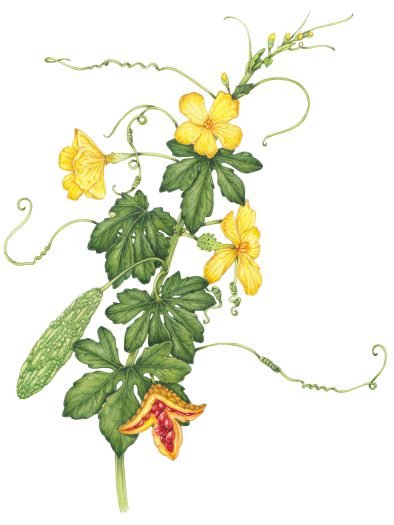
Montserrat is an island in the Carribbean, part of the Leeward isles and the Lesser Antilles chain. So when I was asked to illustrate some of the flowers that grow there I wished fervently that the client would send me out to do research on the ground. Alas, it was not to be. Realistically, there was never any chance of a trip there, but in truth not being able to see the plants I was illustrating in real life posed certain problems.
Working without reference vs working without knowledge
I’m used to illustrating plants out of season. I’m also used to working from photographs (see my blog). What I found challenging was illustrating plants I had never seen before. There are plenty of existing illustrations of the plants of Montserrat, and photographs galore. But I only realised when tackling this job just how vital it is to have some mental notes on a plant, from when you HAVE seen it growing, If you’ve never seen it, then this resource doesn’t exist. This leaves you struggling to settle on the correct green for the leaves, or wondering which of the seven images you’re working from best represents the typical growth habit for the plant.
Prickly pear
In amongst, there were some plants I did recognize. One was the Prickly pear Opuntia ficus-indica.
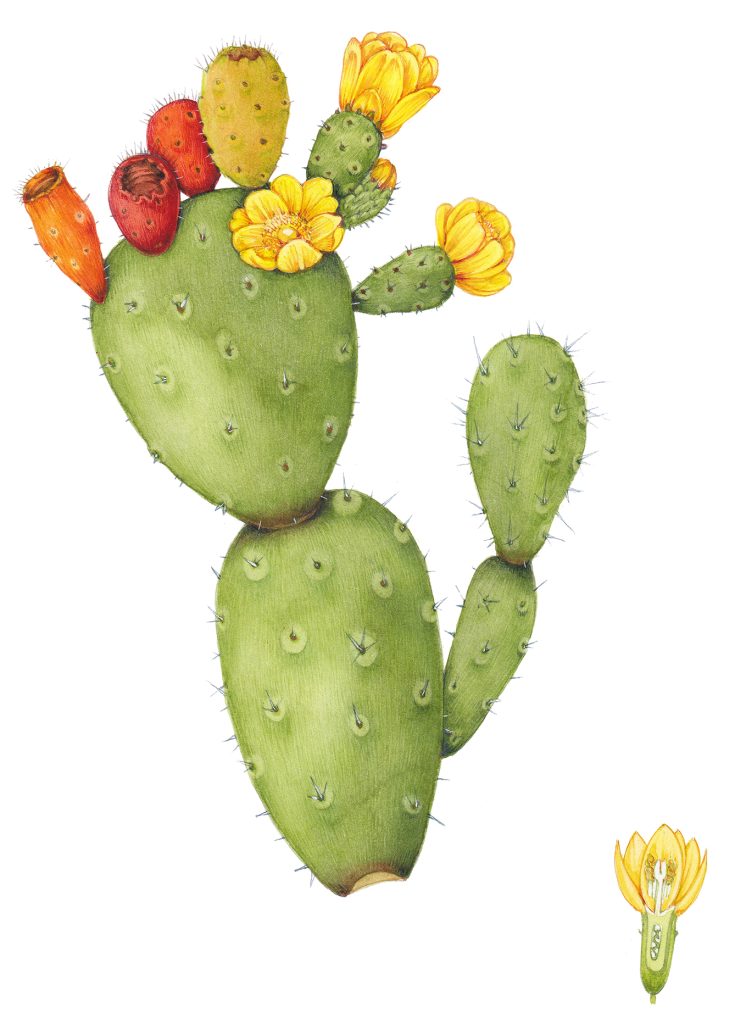
Prickly pear Opuntia ficus-indica
I know varieties of this plant from holidays in Greece, and have had the delight of laughing at a friend who sat on one. I’ve also rubbed off the spikes and eaten the fruit. It’s familiar to me, and I thin it’s no surprise that it’s one of my favourite illustrations from this batch of Montserrat plants.
Bush Tea
However, some of the plants on the list were just incredibly beautiful. I forgot my worries and just submerged myself into them. This is true of the Bush tea or Quickstick Gliricidia sepium, a tree which presents a veritable froth of flowers. thewse were a lot of fun to paint, and all the reference images seemed more or less similar, so there was no panic about colours.
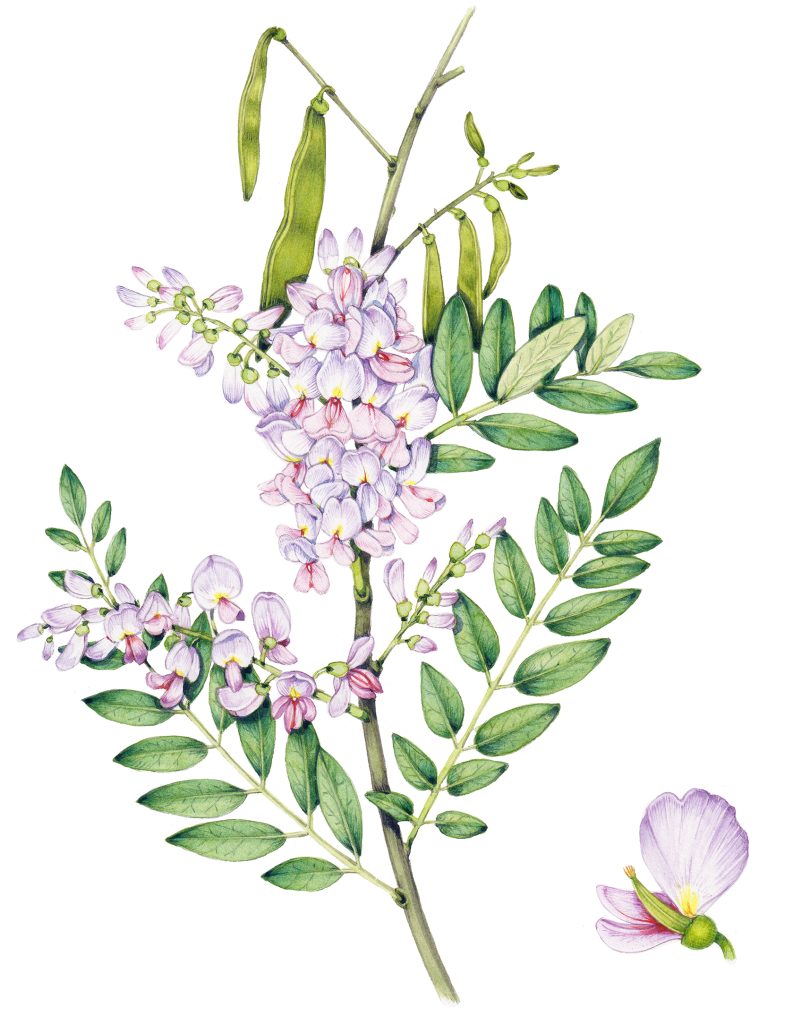
Bush tea or Quickstick Gliricidia sepium
Madagascar Periwinkle
Another plant I’ve seen growing in life is the Madagascar periwinkle Catharanthus roseus. This plant was in a fascinating exhibit at the Welsh National Botanic Gardens, all about medicinal plants. Madagascar periwinkle contains active compounds which are used extensively in the treatment of cancers. At the time, I loved how startlingly bright the flower was. It was a joy to be able to get out the Opera pink watercolour and dive into that colour.
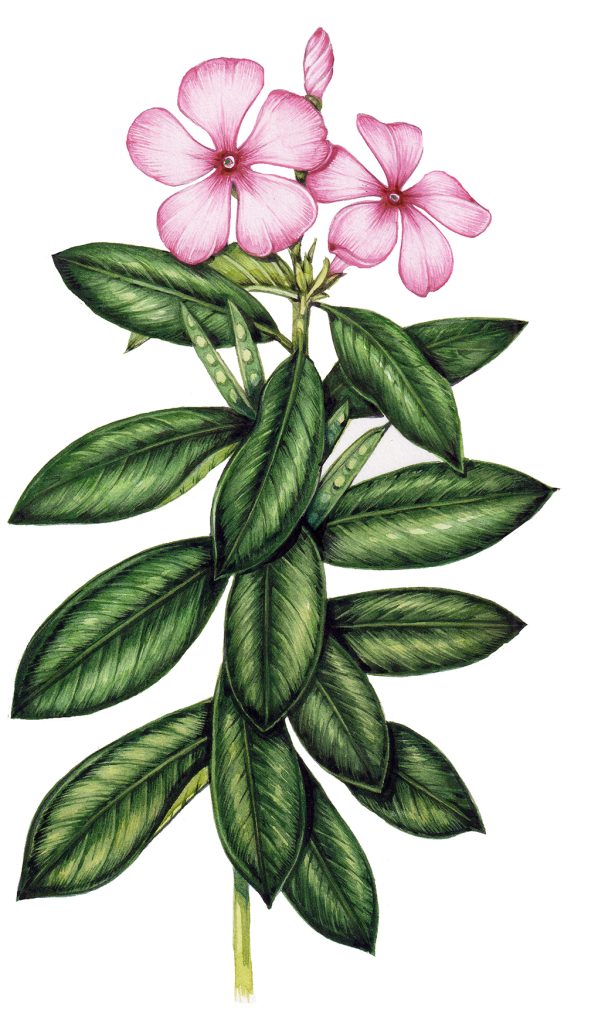
Madagascar periwinkle Catharanthus roseus
The Leaf of Life
One of the most extraordinary Montserrat plants I drew was the Leaf of life Bryophyylum pinnatum. This plant creates tiny budding clones of itself along the perimeter of its leaves. These have little roots, and are ready to drop off and grow where they land, bypassing the need for pollination and seed production. Saying that, the plants do have rather astonishing-looking flowers too, so clearly they use both methods to reproduce.
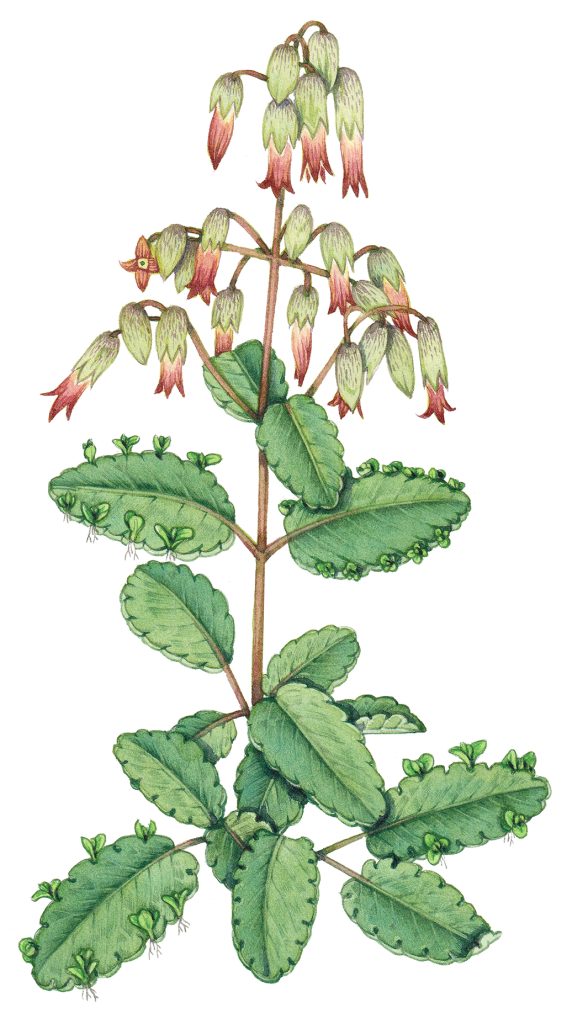
Leaf of life Bryophyylum pinnatum
This plant was a total challenge with colour. Some photos showed the flowers scarlet, in other lights they looked closer to a maroon-brown. The leaves looked blue, pale green, all the way through to a dark vibrant green. This varied according to the light in which any photos were taken. Old illustrations weren’t any better as there was an equally varied number of greens shown there, too. I went for the green I saw most frequently as wished (yet again) that I was either in Montserrat, or near a botanical garden so I could check out the plant with my own eyes.
Pung Collie
Another favourite was the Pung coolie or Bitter melon Momordica charantia. I’ve never seen this plant, but fell in lvoe with it. the strange, knobbly green cucumber-like fruit which turn orange. Bright red pulpy seeds. Tendrils galore (and I loe tendrils, they’re so much fun to paint and incredibly useful when it comes to composition). To top it off, like its’ relative the cucumber, it has enormous blousy yellow flowers. What’s not to love?
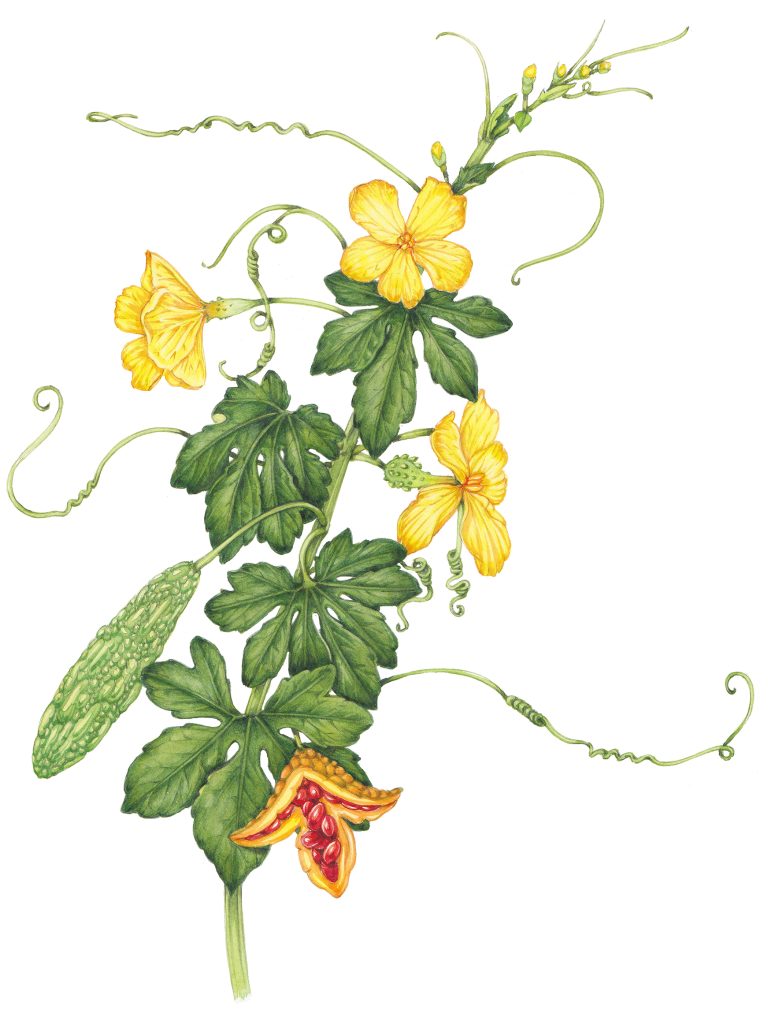
Pung coolie or Bitter melon Momordica charantia
Aloe Vera
This plant is obviously one I’m familiar with. Many people I know (me included) have a little one in a pot in the kitchen, to rub on burns as an emollient. (Interestingly, in my research I found out this has no scientific effect, so perhaps it’s another example of the placebo effect helping ease the pain of a minor injury?)
What I didn’t know was anything about the flowers of the Aloe vera. Turns out that the plant can be really big, which I hadn’t realised. And also turns out they have extraordinary yellow flowers, held in a tall spike. Who knew? (Well, the good folks of Montserrat, no doubt, but it was certainly news to me).
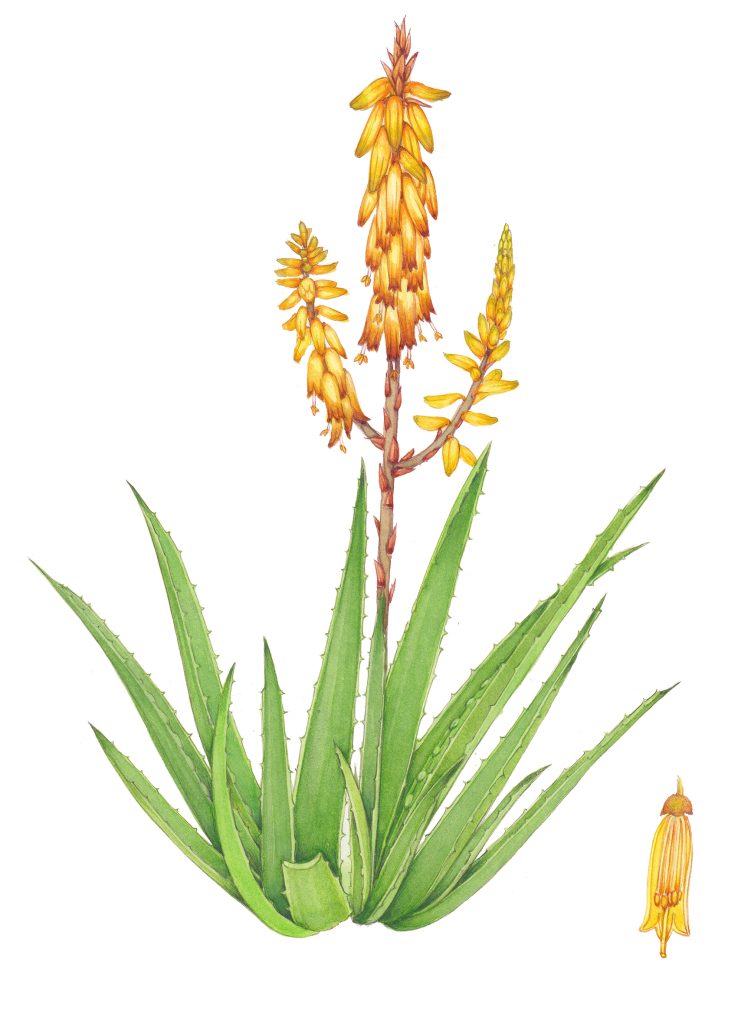
Aloe vera
Having my little potted plant as colour reference was really helpful here. Again, seeing with your own eyes is so useful.
Line drawings
The commission also called for simple line drawings of all these plants. This is so the kids in Montserrat can use them as colouring-in sheets when they’re on school-trips to the National Trust there. I’ve produced illustrations like this before, for Foraging for Kids by Adele Nozedar, so it was easy to do. In fact, it’s simply a matter of keeping a steady hand and more or less tracing the watercolour illustration.
There was one illustration where this was tough. It’s the Trumpet bush Cecropia peltata. This is an enormous tree with umbrella-like leaves and strange pendulous fruit like fingers. The watercolour went well, and to show the scale of the leaves I allowed one leaf to be cut off the edge of the page.
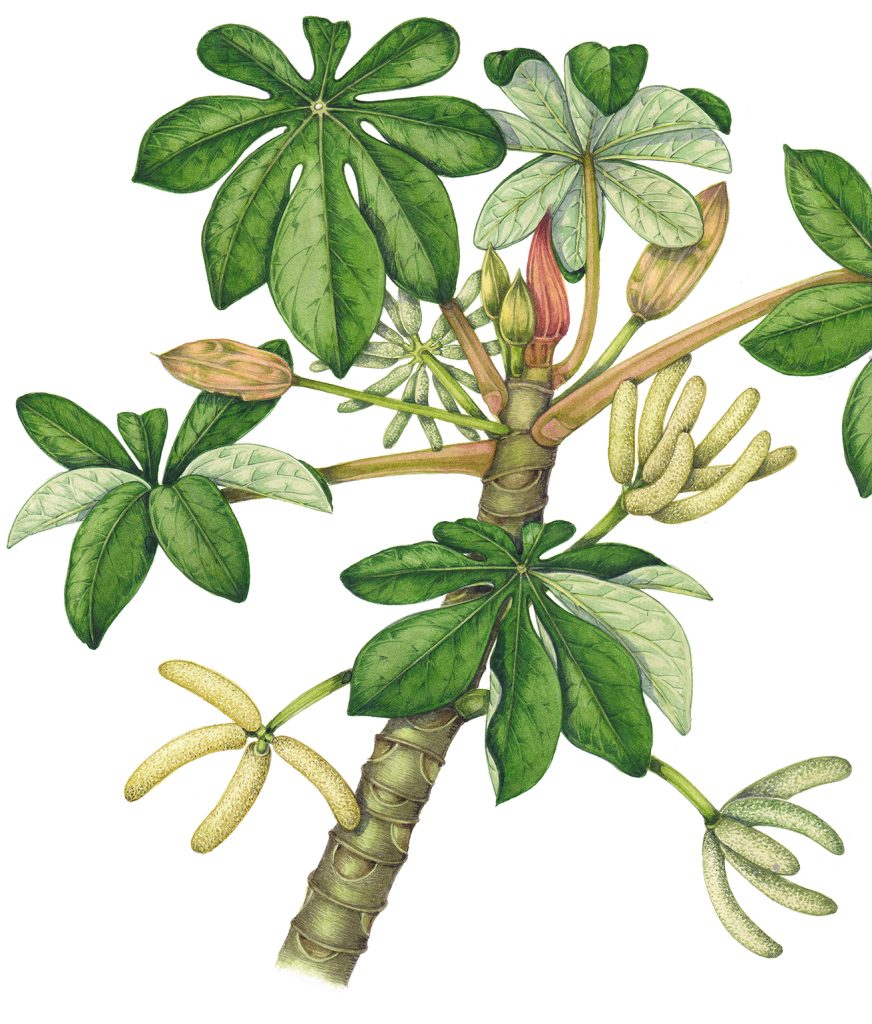
Trumpet bush Cecropia peltata
This effect works well for the watercolour, but with the line drawing it just leaves a leaf unfinished. I spent quite a long time trying to decide what to do about this. Finally, after 2 cups of tea, I decided to leave it as is, and not to cut the edge with a sharp pen line, nor to complete the leaf and thus compromise the composition. I think it’s worked out ok. Hope the Montserrat school kids agree.
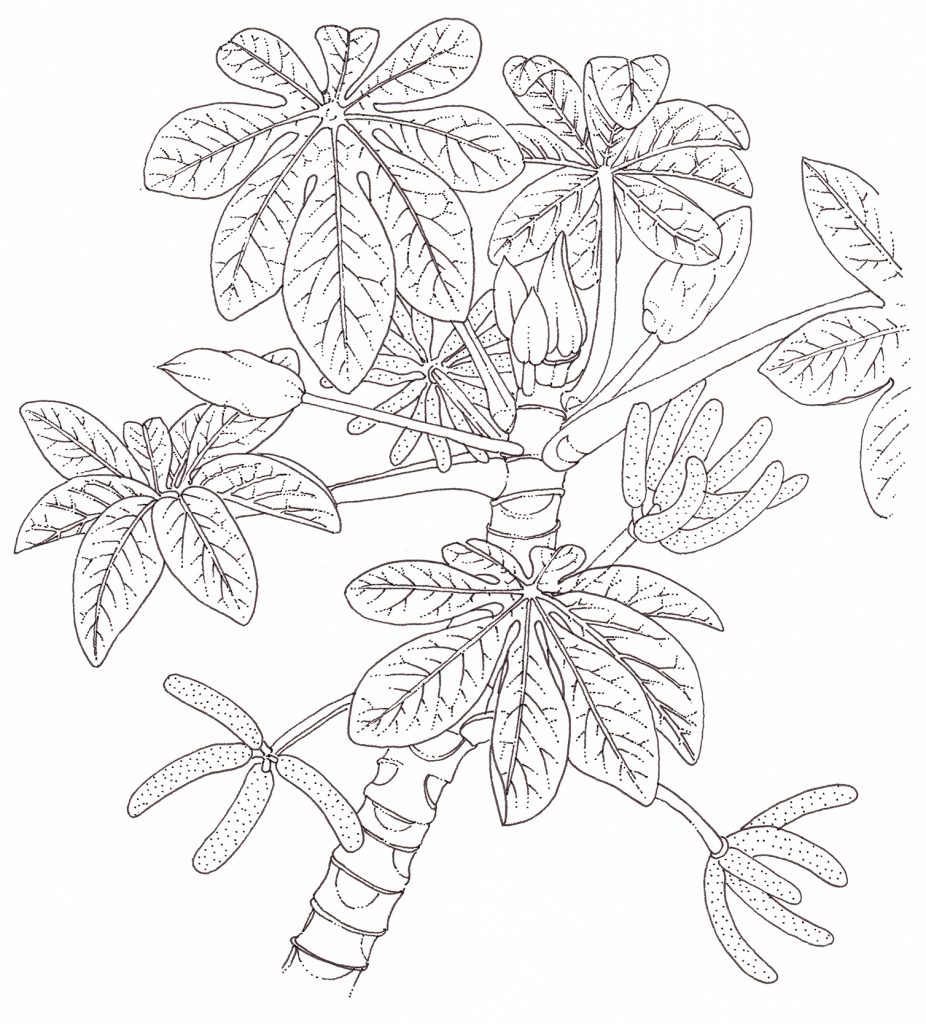
Trumpet bush Cecropia peltata
Conclusion
Although there were 15 plants to illustrate in this assortment of flowers from Montserrat, I’ve only highlighted a few here. This job reminded me of just how important knowing your subject can be. Working from afar, thanks to the joys of modern technology, is wonderful. But for a feeling of doing a job well, I think I need to have some background awareness of a plant. If only so I can be sure I get the right shade of green for the leaves!


Absolutely beautiful. Hope it inspires at least one of children to discover botanical art and maybe in years to come be able to produce paintings from live plants on the island. It would be interesting to know if the actual colours of plants in their own habitat are exactly the as the same plant grown somewhere else in the world.
Hi Christine,
This is so true. if you think about the variety of colour between something like a daisy, then of course its easy to realise how bit of an effect different environments have on a plant. So yes, it would indeed be amazing to see these plants growing in their native habitat. Yeah, I do hope my stuff helps inspire some kids to get involved with their wildflowers, although I often feel some young people already have buckets of passion for nature. It just needs to be harnessed and cherished to see them into later life. Thanks for your comment xx
Beautiful thank you so much absolutely beautiful work artistry
Thank you Ruby, what a generous comment.
Stunning illustrations Lizzie.
Regards Peter
Aww thanks Peter. Really appreciate it, as always.
Hi!
Beautiful drawings! I’m actually looking for a botanist on the island, and wondered if your client was a local botanist?
Would be very grateful if you knew anyone on the ground over there!
Hi Daisy, no I dont Im afraid. I was commissioned by Simon Norman from Field Studies Council. Im sure he’d be happy to point you in the right direction? Ill email you and cc Simon in now.